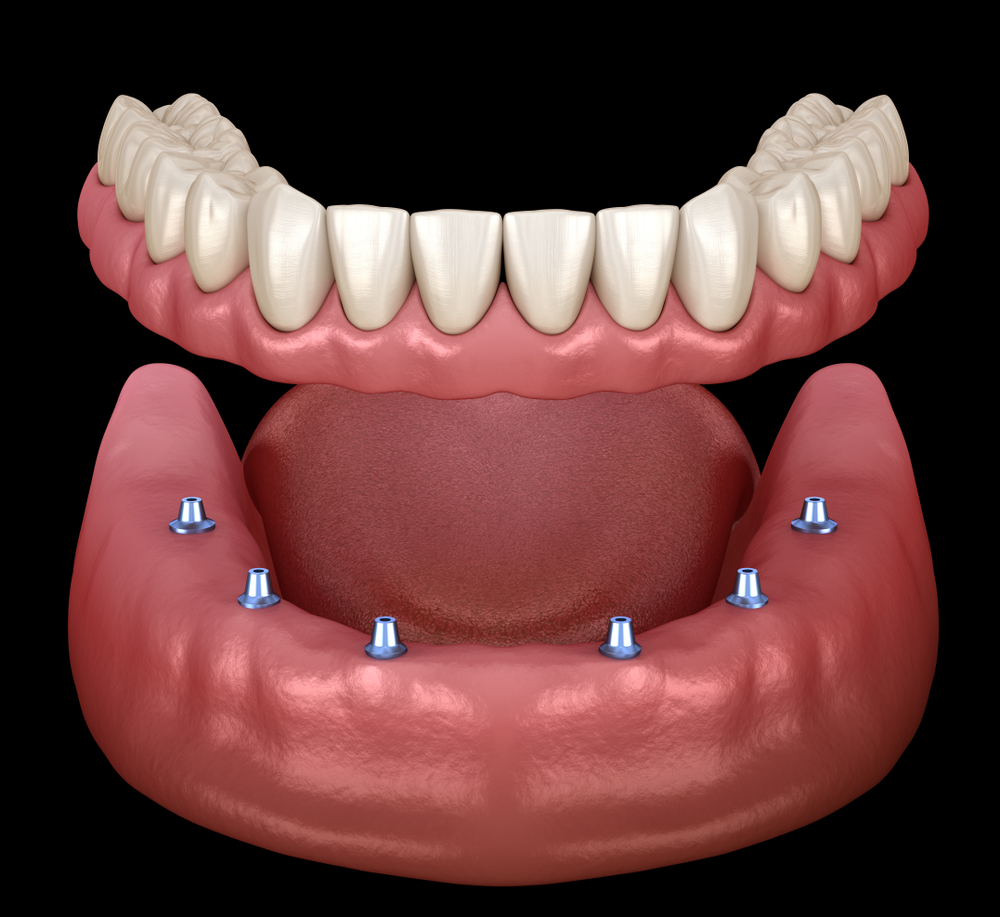Acrylic removable partial dentures are a group of dentures whose common feature is have a support zone mainly on the mucosal surface. This means that during chewing they are supported by the mucous membrane of the palate and the toothless alveolar processes. This is different compared to dentures with periodontium support (eg. Cast-metal dentures or bridges), which transmit the main force generated during chewing to the remaining natural teeth of the patient. An example of a tissue-supported denture is also a complete denture, used in edentulism in the upper and/or lower dental arches. It consists of an acrylic plate covering the whole denture-bearing area, meaning the alveolar processes mentioned above, the palate, part of the sublingual region, and it consists of individually selected artificial teeth.
In addition to the replacement of all teeth, a tissue-supported denture can also be used to replace partial tooth deficiencies. However, this should be a temporary solution, used to adapt to new conditions existing in the mouth, or when there is a need to remove many teeth in a short time. The partial dentures should after some time be replaced with another type of prosthetic restoration.
In the case of a complete denture, it is a good way to reconstruct an edentulous mouth with a satisfactory aesthetic effect, a fairly good restoration of the chewing function, and comfortable for the patient in everyday functioning. On the other hand, these dentures have disadvantages such as having to remove them at night, maintaining very good hygiene, as well as necessary corrections in the form of relining or making new dentures after several years due to the progressive, inevitable bone loss. Another disadvantage is the relatively long time of their fabrication - as will be described below, the procedure consists of many visits.
Tissue-supported dentures are supported on the denture-bearing area mainly due to the suction provided by the adhesion to the mucous membrane. However, there are situations in which patients do not accept such a form of retention or supporting the denture. For this reason, additional mechanical attachments can be added to residual tooth roots or implants. Retention elements placed on these roots allow for a much stronger connection between the denture and the denture-bearing area. Then, such a prosthetic restoration is called an overdenture.
Complete tissue-supported dentures in a edentulism step by step:
- The first visit involves examining the patient and taking anatomical impressions of the edentulous maxilla and mandible. The doctor additionally determines the extent of the denture bearing area, ie the place where the denture plate will rest in the future.
- The second visit is the customization of the prepared individual trays. These are the impression trays designed individually for each patient, which are then used to take the functional impression. It is a combination of the classic procedure of taking an impression while recording the movements of oral soft tissues. For this purpose, the doctor places the prepared individual tray with a special impression material in the patient’s mouth, and then instructs the patient to perform movements such as wide mouth opening, licking lips or whistling. This allows the borders of the denture to be accurately designed in such a way as to obtain the maximum adherence to the denture-bearing area.
- The next visit involves obtaining the central occlusion. The aim of this procedure is to register the position of the mandible in relation to the maxilla in the appropriate, most physiological spatial relation. During this visit the patient has the so-called occlusal wax rims placed in the mouth. The doctor modifies them appropriately in order to establish and record a centric position. During this visit, the color of teeth is also chosen. According to his knowledge of aesthetics, the doctor usually offers several tooth colors, but the final decision belongs to the patient who can choose his new teeth from the entire range available.
- At the next visit, the doctor checks the trial denture in the patient’s mouth. It is a visit where corrections in the position of the teeth, as well as the previously determined centric occlusion can be made easily. Any problems with the dentures should be fixed during this visit.
- After a few days of waiting, the patient receives ready-to-use dentures. The doctor checks them in the patient’s mouth and gives instructions on their use, such as the need for mucosal adaptation, storage and cleaning, as well as the schedule of follow-up visits. It should be strongly emphasized that this visit does not end the treatment. In the vast majority of cases, along with the denture adapting to the denture-bearing area, more or less severe ailments appear that can be eliminated during control visits. The first stage of using complete dentures is the cooperation between the doctor and the patient, during which the patient gets used to his or her new dentures and learns to function with them. At each stage, the doctor eliminates any problems that may arise.
Offer
Warszawa Ochota
Adres:
ul. Dorotowska 9
02-347 Warszawa
Telefon: +48 501 328 772
E-mail: recepcja@ddclinic.pl
Godziny otwarcia:
Poniedziałek - Piątek: 9:00 - 20:00
Sobota: nieczynne
Warszawa Ursynów
Adres:
ul. Migdałowa 10 lok.5
02-796 Warszawa
Telefon: +48 502 070 050
E-mail: recepcjaursynow@ddclinic.pl
Godziny otwarcia:
Poniedziałek - Piątek: 12:00 - 20:00
Sobota: nieczynne

